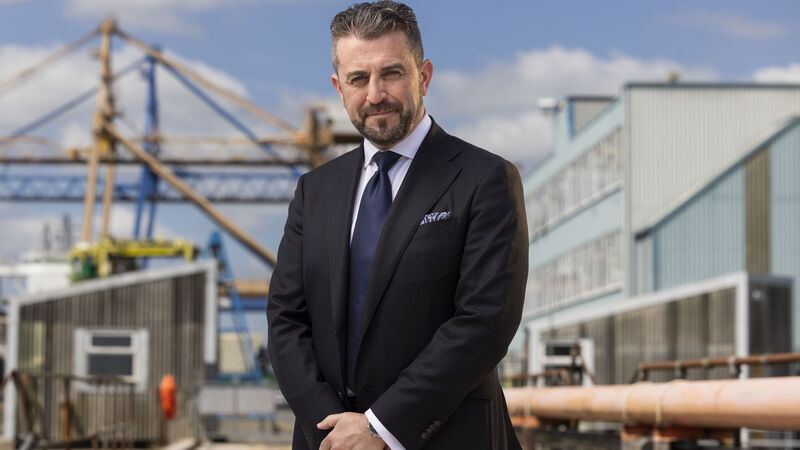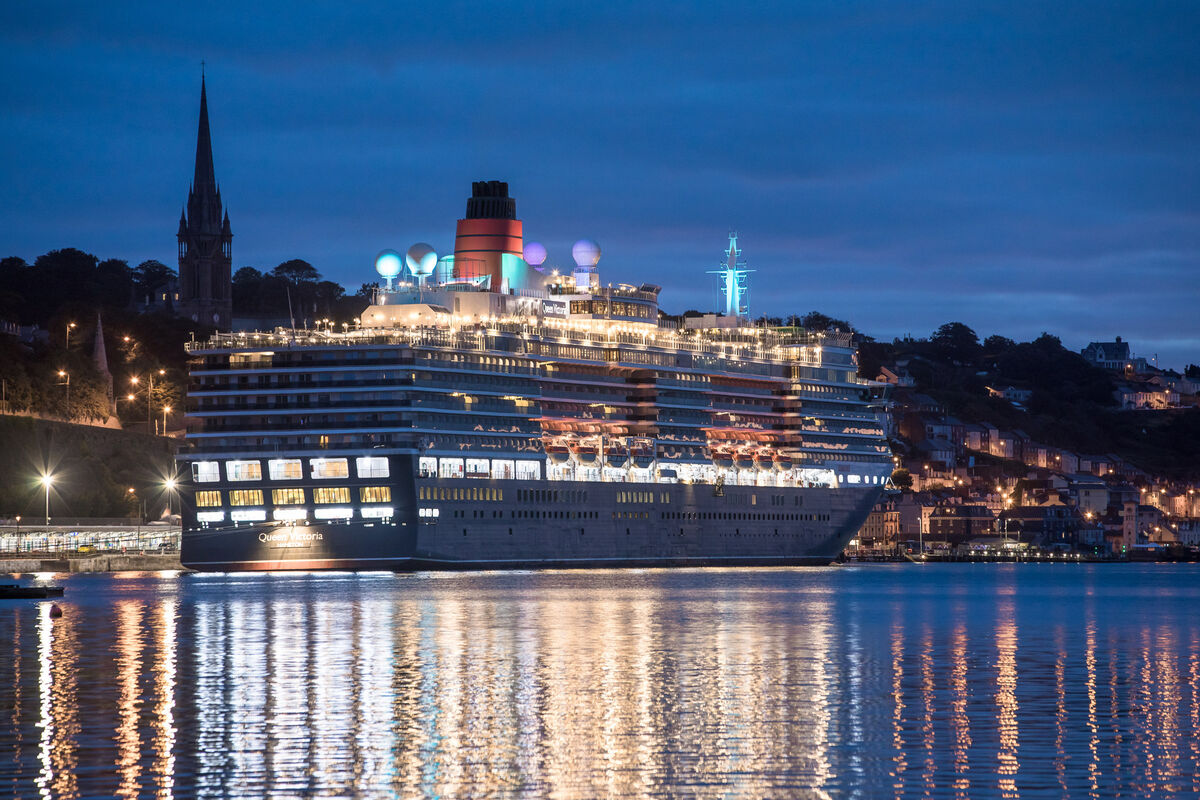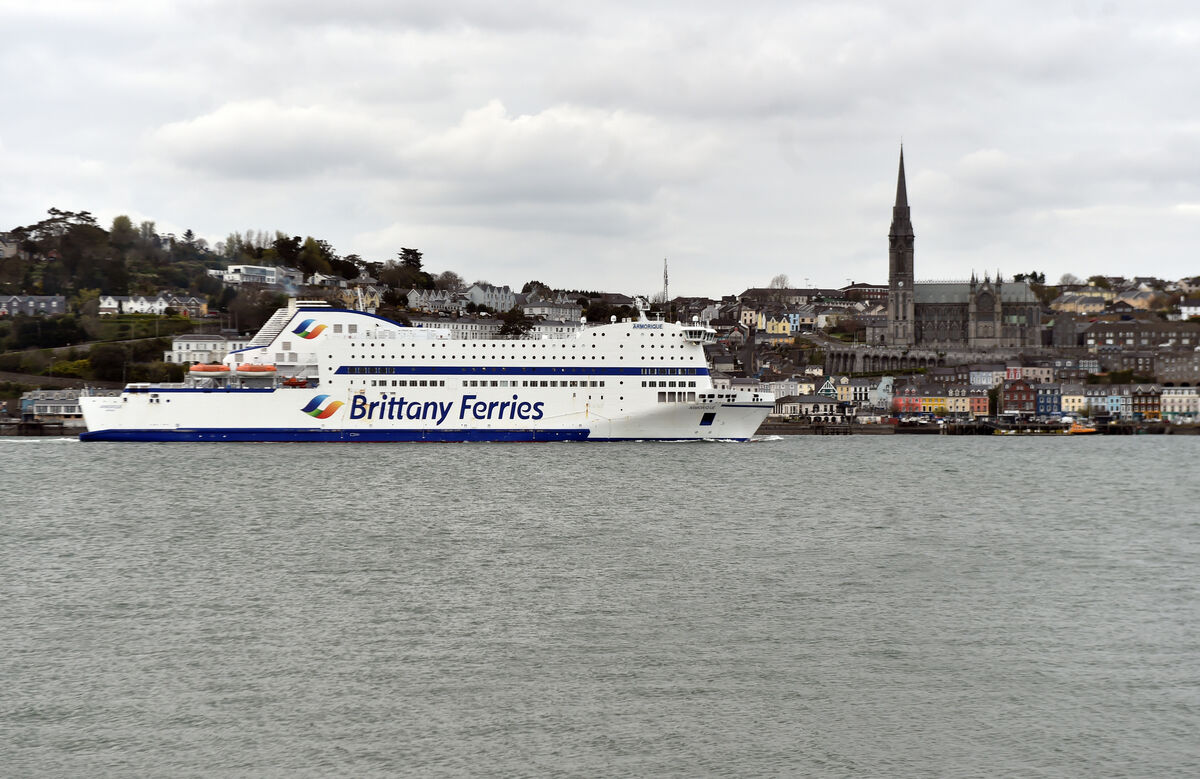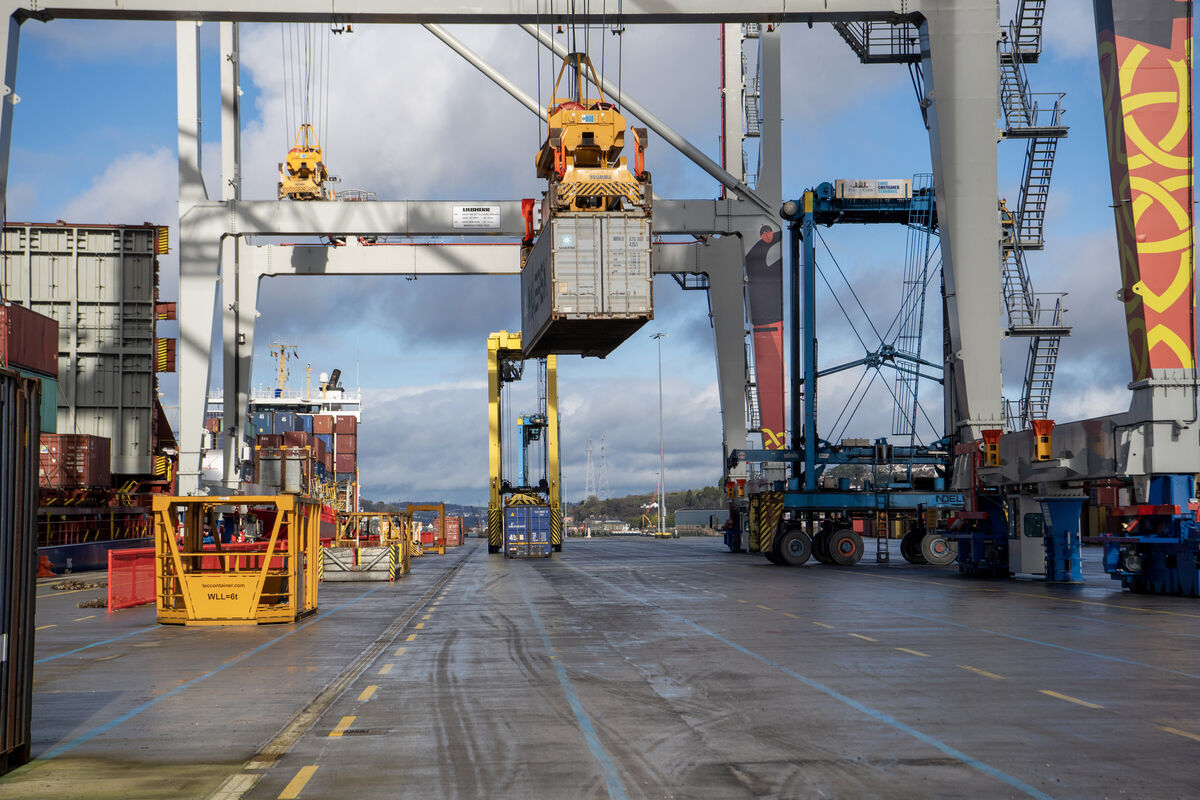The Port of Cork's ambitions for 2050

Port of Cork chief commercial officer Conor Mowlds.
It’s been a busy year so far at the Port of Cork, with a generally confident prediction for the remainder of 2023.
“We are quite happy this year in terms of where the Port of Cork is going if you compare and contrast with the challenges pre-pandemic,” explains chief commercial officer Conor Mowlds, highlighting the continued increase in cruise ships business.
"The cruise ships are not just about revenue for the Port of Cork, but a huge contributor to the local economy. We will see over 100 ships here this year, a hugely positive development.”
Having traded through the significant challenges of covid and Brexit, the cruise ship traffic has contributed to the positive outlook currently in evidence.

“Cobh has benefited hugely from the cruise ships traffic, as indeed has the Port of Bantry and the general hinterland. These cruise tourists want to come back again and again, because of the welcome they’ve received right across the region, which is a positive for all concerned.”
Cobh is Ireland's only dedicated cruise berth and the business is worth an estimated €14m to the local economy — with each passenger spending on average €85 in the area.

The direct routes to the continent are another plus, contributing to the overall positive outlook, he adds: “The Brittany Ferries route has come back stronger than ever, with over 100,000 passengers, another huge benefit to the whole region, and which is booked out over the whole summer season.
"While the cruise ships and the roll-on, roll-off trade are two distinct entities, they do add that well-needed boost to the tourist economy.”
As the chief commercial officer, Mr Mowlds is responsible for the development and implementation of the port’s commercial strategy, including its integrated business development, marketing and public relations activities.
Having held various positions in both the public and private sectors in the UK and Ireland, he previously served as the head of the National Maritime College of Ireland, the country’s joint civilian/naval maritime training, education and research institution.
A graduate of maritime business and law and a Fellow of the Institute of Logistics and Transport, he has been a council member on the board of the Irish Chamber of Shipping and is the serving chairperson of Cruise Ireland.
The Port of Cork’s recently opened €89m container terminal in Ringaskiddy marks the largest single investment by any port in Ireland over the past 100 years, ensuring Cork has the capacity to handle major incoming container traffic with one of the largest deep water, multi-modal berths in the world.

When fully operational, on completion of the M28 road network, Cork container terminal will have the capacity to handle 330,000 20ft equivalent units of cargo annually.
The new terminal, which occupies a 39-hectare site, is expected to handle 120,000 containers in its first year of operation, with up to 400 truck movements a day when fully operational.
“We are now operating two terminals, having decided to maintain Tivoli, which is fantastic for us. We are looking at our long-term plans, which will mainly be governed by road access via the M28 on the bay side feeding into Ringaskiddy, and the R624 on the other side into Cobh.
"Those two arteries are hugely important to us, and getting the M28 fully operational will be transformative. Until then, we have to respect the traffic management plans and the maximum traffic we can handle, without impacting negatively on the local communities.”
Another important addition to the commercial operation is the Independent Container Line’s direct deep-sea route, which operates between Cork and the US east coast — the only direct route out of Ireland connecting to the USA.
General commodities handled on this service include refrigerated cargo, pharma, foodstuffs, healthcare products and chemicals. A weekly service gives exporters unprecedented opportunities to develop business in the USA.
Pre-tax profits at the Port of Cork company last year increased by 20% to €13.28m. The 2022 consolidated financial statements for the company show the firm recorded the increase in profits after revenues rose by 21.5%, from €39.83m to €48.41m, as the business recovered from the impact of the pandemic.
Numbers employed by the Port of Cork company increased from 154 to 170. In its recently published 2050 masterplan outlining the port’s ambitions over the next three decades, a key component is supporting the accelerated growth of the offshore renewable energy sector.
Planning permission has already been granted for a €200m land reclamation project to extend the quayside walls, bringing jobs and economic development to Cork and the wider region.
The masterplan offers “a strategic blueprint towards the future,” with the facilitation of fixed offshore renewable energy as a central element, in addition to achieving a 51% reduction in overall greenhouse gas emissions by 2030, reaching net zero emissions by 2050.
"Unlike the other ports, we have planning permission secured for quay extensions, so if we get the funding, we can have them built by 2026. That means we can support the offshore renewable industry which is on the go. No other port in Ireland can do that.
Earlier this year, the Port of Cork Company and the ESB signed a memorandum of understanding, agreeing to work together to progress plans for Ireland’s offshore wind and green hydrogen development.
A collection of the latest business articles and business analysis from Cork.





